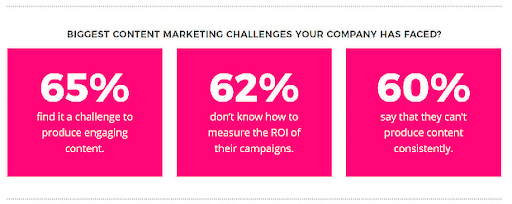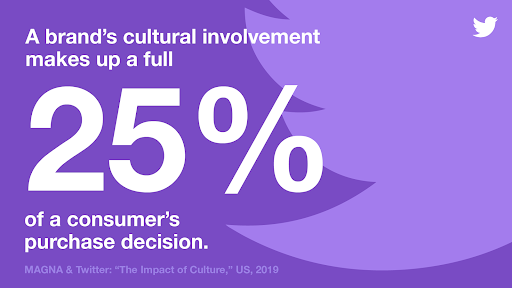5 Steps to Leveraging A DAM System to Make Old Content Engaging Again
Using a DAM (Digital Asset Management) system should be a key part of any content marketing strategy. It’s a software that allows you to create and manage a library of any branded content, including text, images, and video. It also promotes effective teamwork by giving every department access to relevant materials as needed, as well as ensuring all new content fits with your brand guidelines.
Here are five steps to use this to make your old content engaging again.
1. Organize your system
In order to use a DAM system to its full potential, you need to spend time organizing it. Gather high-quality versions of any files you want to keep, and get rid of anything that no longer fits your brand image. This is particularly relevant if you’re scaling a business, have recently changed your logos, gone through a rebrand, or have discontinued products. Along with text content, images, and video, it’s also worth adding individual elements that are relevant to your branding - for instance, font choices or color palettes.

Once you have these files, you need to make sure you have a system in place for naming them. DAM systems allow you to add metadata, meaning you don’t need to try and cram it all into the file name. Make sure you tag each asset with anything you deem relevant - that might be product name, SKU, location, campaign names, or really anything else.
It’s also important to make sure tags and naming convention are consistent - you don’t want to be looking for Spring/Summer 2021 under ‘ss2021’, ‘ss21’ and ‘2021springsummer’. That can get confusing in a hurry. It could be worth compiling a style guide to ensure everyone follows the same formatting for future uploads.
By investing the time now, you’ll create a beautifully organized library that saves time (and headaches) for all stakeholders pulling content as needed. For instance, if you’re looking to promote your website in a print article about next summer’s fashion trends, you can avoid the redundant work of having to take new photos of your product range. Instead, search ‘ss2021’ and pick your favorites, downloading them as the appropriate file type.
2. Update your old content to match current branding
One thing that turns people off to old content is when it looks outdated. Now that you’ve got your DAM system up and running, it will be much easier to spruce those up. Maybe the images no longer fit with your brand identity, or your links no longer lead anywhere. Whatever the case may be,by spending time updating old content, you make it easier to share while protecting the integrity and intent ofimage you’ve carefully crafted. Plus, people will be more willing to share assets themselves knowing they no longer look outdated!
It’s also worth reassessing your sales territory planning best practices as you do this, as it may factor into those decisions. For instance, if you’ve realized your sales territory doesn’t cover an industry you thought it did, you may want to remove content related to it. If you’ve discovered your territory includes an industry you never mention, you can add that valuable context in articles to increase their relevance.
Updating old content in this way can be more efficient than creating new content - especially if you update demonstrably successful material. Consider, for example, a blog post about the best places to eat in New York. This might draw in a lot of views and be shared a lot, but a year down the line it may be missing some new trending locations. By updating it to add a couple of newly discovered places, you keep it relevant - and increase the chances of people continuing to share.
3. Refresh old content for new platforms
In addition to updating old content, you can adapt it. If you have a great blog post about how to record a webinar, and you’re running an email campaign about adapting to remote working, why not take a paragraph or two from it to include? It’s content that’s already been reviewed, so it can save you a lot of time.
That process can also help with another big challenge content creation teams face - the sheer amount of engaging content they need to produce. Adapting pre-existing content can help cross items off that list.
 [Image source](https://optinmonster.com/content-marketing-statistics/)
[Image source](https://optinmonster.com/content-marketing-statistics/)
This is particularly helpful if you’re just starting out on a new platform. If you’re only just setting up an Instagram account, take the time to add a bunch of posts before people follow you (if you do it after, it’ll come across like spam). You don’t need to make these posts from scratch - well-received photo campaigns or graphic versions of short text posts can be repurposed here.
Some great ways to refresh old content include:
- Using transcriptions of video/audio content for a blog post
- Using marketing campaign photos in sponsored tweets or as Instagram posts
- Taking a section of a blog post to use as a LinkedIn post
- Using statistics from a blog post to create an infographic
- Using event video in advertising materials
Having a DAM system in place makes this much easier, as you no longer need to trawl through random files to figure out what you have. Instead, you can simply search relevant terms and have it immediately ready at your fingertips.
4. Look out for relevant trends
While some content ages quickly (you don’t want to be sharing your Valentine’s posts in the middle of summer) a lot of assets can be brought out again and again. The best way to do this is to keep an eye on current trends.
Here’s an example; in manufacturing, there’s a lot of talk about digital twin simulations. Along with creating a couple new bits of content on the topic, we can take a closer look at what exactly it involves. One big aspect is the IoT (Internet of Things). Rather than trying to create everything from scratch, you can make one or two new bits of content but then search through your system for anything related to IoT and share them.
This is especially relevant if you can share in response to mentions of the trend itself - maybe there’s relevant hashtags on Twitter or a pertinent discussion on LinkedIn.
 [Image source](https://marketing.twitter.com/na/en/insights/brands-plus-culture-plus-twitter-equals-impact)
[Image source](https://marketing.twitter.com/na/en/insights/brands-plus-culture-plus-twitter-equals-impact)
By pulling out your old content in response to current trends, you increase engagement with people in general. You might even catch their attention enough that they take time to look through more of your content, too.
5. Make (some of) your content widely available
Sometimes the best engagement you get with your content comes from customers themselves. By making some of your content widely available, you make it easier for content to be shared on your behalf.
You’d be right to have some concerns about content protection here, and it’s definitely not worth making everything available to everyone. Generally, there’s a few levels of access you should encourage:
1. Full access: content marketing team
Everyone who works in your content marketing team should have full access to files on your DAM system. This will significantly speed up the content creation process and ensure all content produced can use the same color palettes, fonts, and other branding aspects with ease.
2. Limited access: the rest of the business
Workplace digitalization is all about encouraging communication and efficiency. If your sales team needs a product image to show off, they can search the management system rather than waiting for content to get back to them.
3. Restricted access: clients/customers
If you’re a wholesaler, many of the shops that buy from you will likely stock your products on their website. This can lead to them taking their own pictures - sometimes this has great results, and sometimes less so. You don’t want your products to look bad, so why not give them access to photos of any products they order from you? This way you can use your old content to ensure brand consistency.
About this author:
John Allen, Director, Global SEO at RingCentral, a global UCaaS, VoIP and Contact Center Solutions provider. He has over 14 years of experience and an extensive background in building and optimizing digital marketing programs. He has written for websites such as 3dCart and Pandadoc.
